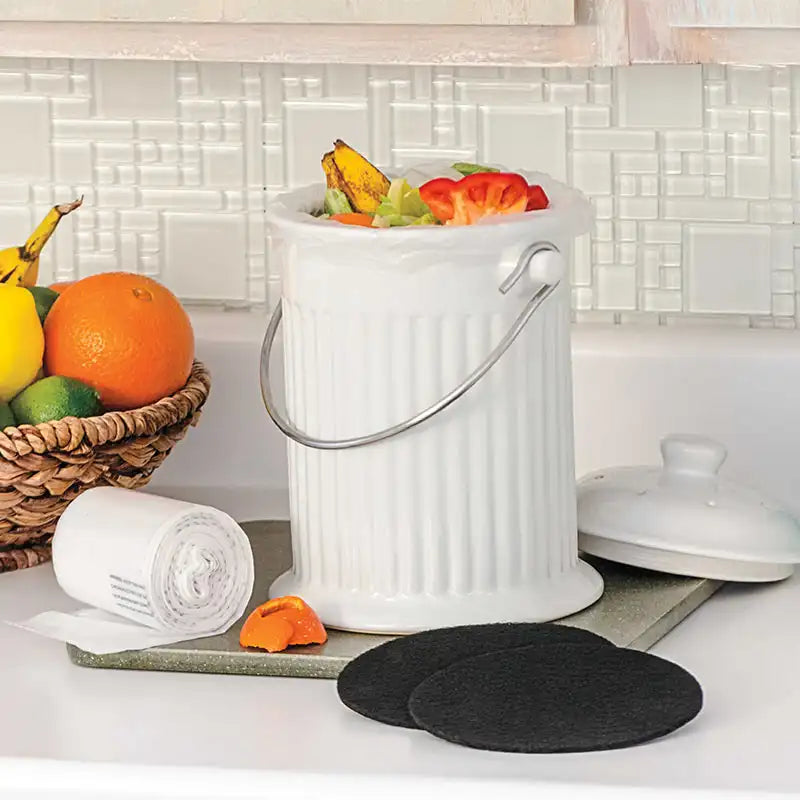The Art and Etiquette of Fall Leaf collection
Time for our yearly special report on how to harvest, store and utilize those wonderful fall leaves-- Nature's annual gift to gardeners! I've been saying it for some 35 years now, and it was true the first time and remains true today: Correctly capturing this manna and mulch from heaven provides everything your garden needs to prosper without chemicals of any kind. We've got a lot to cover, so let's do this bullet-point style.
- No Bending! Yes, they're down there on the ground, but that doesn't mean that you have to stoop to their level to harvest them. If you're bending over at any point in this process, you're doing it wrong! (Or as we love to say: "Bending is for chumps!")
- Leaves on lawns. Perhaps the easiest and most straightforward use of your leaves. Employ a mulching mower to mow the leaves right back into the lawn. Mulching mowers have super sharp blades that pulverize the leaves into a fine powder. Allowing that powder--and the tips of the grass you'll also be going over--to drop back down feeds the lawn, eliminates thatch by creating a layer of biological material that prevents thatch from forming, and, of course, gets rid of the visible leaves. (Mulching mowers also protect your lawn the rest of the year by ensuring a clean cut, and by feeding the lawn every time you mow.
- If you have a chemical-free lawn, use the bagging attachment on your mower to collect those crazy mixed-up pulverized leaves and grass clippings and empty the contents of the bag into a compost pile or bin. That perfect combination of 'dry brown' carbon in the leaves and 'wet green' Nitrogen in the clippings creates a mix that heats up quickly and produces the highest possible quality compost. Don't add anything, it's already perfect!
- But if you have a chemically treated lawn, any clippings from that lawn must stay on the lawn. The persistent chemical herbicides used on treated lawns are NOT destroyed in the composting process, and any compost made from such clippings will weaken and/or kill any non-turf plants it's used on.
- A bagging mower is also a great way to collect leaves that aren't on a lawn. Blow or rake the leaves onto a flat surface like a driveway and mow them into the bag. If the mower is a mulcher, they should be shredded small enough to be put directly into a compost pile--OR placed in a large, lidded trash can all by themselves for use as a fabulous nourishing non-toxic mulch next season. (Those awful, dyed wood mulches nourish nothing and are about as far from non-toxic as you can get! Oh, and they breed nuisance molds that can stain your house, make you sick, and/or give birth to a stinkhorn fungus that resembles [ahem] surprisingly realistic adult toys.
- But my main leaf capture machine is the blower-vac, a leaf blower that comes with a differently shaped funnel and a collection bag, allowing you to shred your leaves as you harvest them. And today's models are much quieter, because they're electric powered, either by a rechargeable battery or a cord. All you do is take off the blower attachment, replace it with the sucker, and the machine instantly reverses direction. Just suck up the leaves and empty the bag into your compost pile or bin.
- Note: These leaf shredders come in a variety of sucking strengths, indicated by the 'mulching ratio' listed on the package, like '8 to 1', '12 to 1', etc. The higher the number on the box, the smaller particle size you'll achieve--and the best compost is made with leaves shredded their smallest.
- Let's say the ratio of a machine you're considering is 8 to 1. That means you can rake up eight bags worth of whole leaves, empty them out, suck them up and the machine will take those eight bags of whole leaves down to one bag after shredding. Obviously, leaves shredded in a 12 to 1 machine will have even smaller individual particles. Which equals better quality compost that will be available sooner in the Spring. So go big; you'll never regret it.
- Now comes the cooking. A compost bin or pile filled ONLY with the clean grass clipping/shredded leaf mixture will cook at the highest possible rate. Add nothing!
- A pile or bin filled with well-shredded leaves alone will need a little help, and the easiest and cheapest way to provide that help is with spent coffee grounds. They're the perfect grass-clipping replacement, and available to you for free at any local coffee shop. (My guestimate is to add a five-gallon bucket's worth of spent grounds per bin or pile.) And because they weren't collected together, mix the grounds well with the shredded leaves as you fill the container.
- If you want to stray outside of these pure carbon/Nitrogen mixtures, you can mix in some kitchen scraps as you go. Avoid citrus entirely and go soft on alliums like onions. Like it or not, the compost will be inferior and slow to cook if you incorporate more than 10% of your kitchen waste. Sorry!
- So, what should you do with all the stuff you wanted to have a compost pile for in the first place? We'll dispose of that topic next week....



